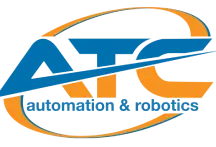ATC Automation Builds Modular Automated Assembly System for Drug Delivery Device
COOKEVILLE, TN—ATC Automation has delivered a state-of-the-art, modular automated assembly system for a global leader in drug manufacturing and drug delivery medical devices to. The system was designed and built at ATC’s campus in Cookeville, TN, and installed at the customer’s assembly plant on the East Coast.
The system assembles a drug dispensing device made from clear polycarbonate. The device is used in an OEM’s point-of-care patient chemistry management system. The market for this product is currently valued at $1.7 billion and is projected to grow at a rate of 4 percent annually through 2030.
The system has been installed in an ISO 8 clean room. The system includes a laser welding system for joining clear polycarbonate parts. Other processes include bonding prep, adhesive dispensing, curing, coating, vision inspection, tray feeding, vibratory feeding, step feeding, pressing and leak testing.
When completed, the product is approximately 8 inches long, 10 inches wide, and 4 inches tall. The assembly process was broken into nine modules to accommodate the numerous processes and subassemblies, to create a flexible footprint, and to optimize process accessibility and visibility for operators. The system assembles approximately six devices per minute. For maximum throughput, some processes are performed on two or three assemblies simultaneously.
The modules are connected to each other with buffers in the form of conveyors, vibratory inline tracks, and pallet queues for robotic material handling. The buffers isolate the modules from one another so downtime on one module will not adversely affect another.
The modules can be placed in the assembly area in locations that facilitate manual material handling for incoming components. In addition, HMIs and operators can positioned where they are needed to optimally support multiple modules and processes.
Rotary indexing dials are used for assembly processes. Linear, servo-indexing “walking beams” are used for tubing assembly. Robots shuttle assemblies in and out of the final leak testing operation. And, a pallet-transfer conveyor supports manual loading stations.
Another benefit of the modular design is that some processes can be isolated. For example, one station involves spraying a silicone sealant. Preventive maintenance may be higher on this module, and there is always risk of silicone contamination to nearby stations.
The device has several tubes of varying thickness and diameters. Automatic feeding of the pre-cut tubes, as well as automatic tube surface preparation for bonding, was implemented at numerous stations.
Leak testing is done with four independent leak test stations. The instruments actuate the device during testing to fully test their functioning. Parts that fail at this station are automatically rejected and segregated from production parts.
ATC Automation also collaborated with the customer for FDA validation efforts. Process failure mode and effects analysis, user and functional requirements specifications, traceability, and final acceptance test protocols were all deliverables on this project.
